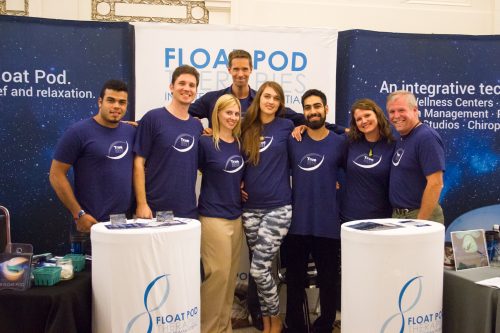 Flotation is unlike just about every other “activity” out there.
Flotation is unlike just about every other “activity” out there.
In fact, it’s really more of an “inactivity”—but as anyone who floats knows, this flavor of “doing nothing” offers far more than the phrase would imply.
We hear the benefits and experiences—that extensive list that science continues to validate through their studies—we see the testomonials, and it becomes evident the profound impact 60 minutes floating in 10 inches water and defying gravity has. So, how do we best access this healing potential?
Few aspects of our lives do their “achieving” in the way that flotation does. Where our day to day lives ask us to achieve outward, REST asks that we open inward, to our body’s inherent pain relief, to our creative problem solving and to our own sense of peace—to name a few.
Because of its nature, floating requires a different approach—a dropping of effort. Floating is, at it’s most relaxing, effortless. As Michael Hutchinson so eloquently described in his The Book of Floating, because this is so, any effort can only seek to diminish it’s effects.
“Relaxation” is a word we know and use frequently—but how often do we experience it in the truest sense; not just as a lack of doing or movement, but as a the “equal and opposite” compliment to our norm?
Where action grabs on, true relaxation lets go.
It’s this letting go that easily becomes unfamilar to us in this age of near continuous achivement.
Here are just a few suggestions in the art of effortless…
1. Breathe, and become aware of your breathing.
The first half of this you’re already doing… all the time. The second half may take a bit of practice.
When we focus on the breath, our attention is inveitably brought to the present moment. Thoughts may be rooted in the past or future, but the breath is always in the now.
Your mind will undoubtedly wander; as frustrating as this can initially feel, it is important to remember that the point of this exercise is not to stay present, but to return to it. Take it easy on yourself, and enjoy honing your present moment skills.
We recommend counting up to 300 breaths to relax as deeply as possible in your float.
2. Remember this simple fact: You already know how to do this.
Your body inherently knows how to relax—it’s a natural part of our being—even if our minds seem to have forgotten. Realize that as helpful as “thinking your way” can be in most situations, thinking’s ability to enhance your relaxation during a float is often limited to simple, positive affirmations, such as “relax”.
Because you already know how, there is nothing for you to do to experience the float! Isn’t that wonderful?
Give yourself permission to see what your body can do without your mind’s help—just this once.
3. Let Go
Giving the mind something present to focus on—such as the breath—and reminding yourself that “you” don’t have to do a darn thing for 60 minutes, can create the perfect grounds for something wonderful: letting go.
Of what? Only all that stuff you’ve been carrying, but don’t need—mind clutter, tension, stress, pain…
We push and push in our active lives, but when we float “allowing” is the name of the game. Allow your body to come into alignment, your muscles to relax and your mind to follow suit.
Effortless can take practice to experience—but it hardly feels like it; we hone our ability to let go by simply allowing ourselves not to hold on.
And far from hard work, letting go, when it comes is a softening.
The post The Nature of “Effortless”. appeared first on True REST Float Spa.





Recent Comments